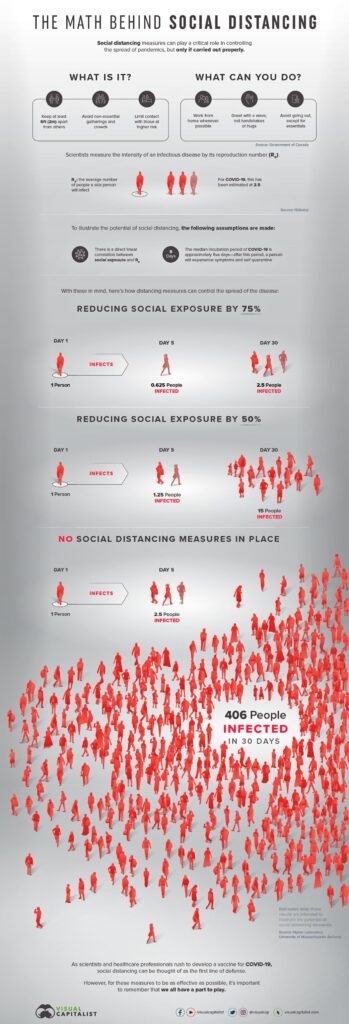Q: Is this just another rule, or is there science behind it?
A: Social distancing works to stop the spread of germs that are airborne after a cough, sneeze, singing, or even speaking. Some argue that the parameters are based on older science models. Newer models suggest that distances longer than 6 ft (2m) are more protective. All agree that social distancing works.
The science behind social distancing is based on the Reproduction Number (R0). It reflects how contagious a germ is. R0 is pronounced “R naught”. It is a mathematical term that indicates the average number of people who could be infected by a single individual. Mode of transmission, infectious period, and contact rate are factors that influence R0. The higher the R0 value, the more contagious a germ is.
SARS CoV-2, the virus that causes COVID-19 has an R0 value of 2.5. That means a person infected with COVID-19 can infect an average of 2.5 people in a period of 30 days if no mitigating practices like hand washing, wearing a mask, and social distancing are used.
Social distancing is disputed by some modern scientists who think that the older research sets too short of a distance. The size of the droplet and how it is propelled from the airway have a greater impact than the original research reported. After these considerations, some scientists propose that 8 feet is more likely to affect the R0 of SARS CoV-2.
Lydia Bourouiba, PhD has completed research that demonstrates a “multiphase turbulent gas cloud” from a human sneeze. This suggests that even the modern model of social distancing of 8 feet is not enough. The images of Dr. Bourouiba’s cloud shows that a sneeze can extend as far as 27 feet. See the spectacular film in the article below.
Though the actual distance might be disputed by scientists, 6 feet is a good place to start.
Modern science of social distancing



